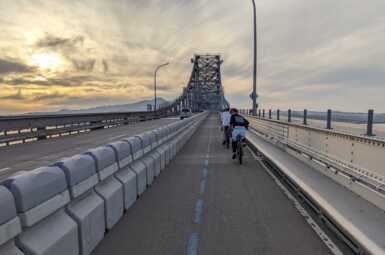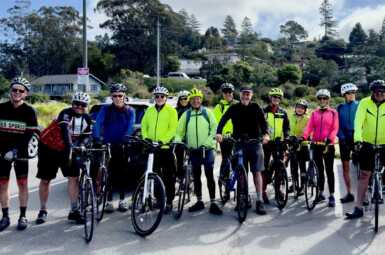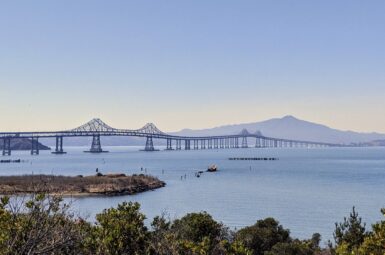March 2023 Special Election 2023 Mill Valley City Council Candidate Questionnaire
As a 501(c)3 nonprofit organization, Marin County Bicycle Coalition cannot endorse candidates for public office, but we are able to share information so that you can arrive at your own conclusion. Below are the March 7, 2023 Special Municipal Election for the City of Mill Valley candidates’ responses to our questionnaire on bicycling in Marin. We have made no content changes. Thanks to the candidates for their time and thoughtful answers.
Candidates’ campaign websites may be accessed by clicking on those with a highlighted name. Those who did not provide a campaign website are not highlighted.
Here are the candidates on the March 7, 2023 ballot for the City of Mill Valley (short-term seat):
Personal Travel
1. Do you ride a bicycle? If so, for what purposes and how often? (For each, please answer either: Never, 1 day/week, 2-3 days/week, or 4+ days/week)
Susan Gladwin:
-
a. Commuting: not applicable
-
b. Errands: 1 day/week
-
c. Road recreational: 1 day/week
-
d. Mountain biking or trails: 1 day/month
Caroline Joachim:
-
a. Commuting: never (work from home)
-
b. Errands: occasionally (we are within walking distance from downtown)
-
c. Road recreational: 1 day/week
-
d. Mountain biking or trails: 1 day/week
Vision
2. In your own words, describe your vision for the future of transportation in Mill Valley.
Susan Gladwin:
I envision a Mill Valley where our infrastructure supports as many non-vehicle modes of transportation as possible. This would include public transit options, bikes, ebikes, pedestrian walkways and scooters. Not only is supporting alternative modes of transit an excellent way to reduce greenhouse gas emissions, but also reduce traffic on the road.
Caroline Joachim:
My vision for the future of transportation in Mill Valley would be one that safely accommodates all users – pedestrians, cyclists, and cars – and that our town has the infrastructure and establishes a pedestrian and cycling network to ensure that walking and bicycling become more viable ways of transportation for people who live, work, and visit our town.
Traffic
A survey from the Transportation Authority of Marin (Figure 18, p. 51) found that over half of Marinites would like to bike more than they currently do. This backs up research that shows that over 50% of adults are interested in biking, but concerned about the threat of fast-moving cars.
3. What concrete steps can be taken to allay these concerns and make people feel safe on bicycles?
Susan Gladwin:
Working closely with regional transit partners and with community partners (such as Safe Routes to Schools and the Marin County Bicycle Coalition to ensure that those who want to use bikes or ebikes as their main form of transportation have that as a safe option. Many community members are concerned with the amount of traffic in Mill Valley and one of the ways to reduce traffic is to give residents the option to use alternative modes of transit.
Caroline Joachim:
One of the steps that can be taken is to assess bike routes to see if there is a need for striping or signing so others on the road are alerted to cyclists. Particular attention should be on roads of narrower width where bike lanes are narrow or non-existent and look for ways to ensure the safe passage of cyclists in these areas. I really appreciate the changes made along East Blithedale going towards Highway 101 with the striping, designated bike lanes, and polling along the roadway to serve as a barrier between cyclists and vehicles. Another step would be to review current bikeways in our town to check on the conditions of the roadways – are there cracks or potholes or other obstacles that might affect a cyclists safety. Also, if there are fast-moving cars, other measures to slow down cars (signs, blinking lights, posted speed limit) may be appropriate. I would also be supportive of more education in our community, e.g., Share the Road programs.
Safety
Traffic deaths and injuries are on the rise, both nationally and in Marin (this includes all road users, not just bicyclists). Many cities in California have enacted so-called Vision Zero
resolutions, setting an explicit goal to eliminate traffic deaths.
4. If elected to City Council, will you support such a resolution? If so, what actions do you see as being needed to improve safety? What are the relative roles of infrastructure, enforcement, and education?
Susan Gladwin:
The bottom line is that residents need to feel safe while in transit, whether it’s biking, walking or driving. There are far too many traffic accidents in our community, and I would support a Vision Zero resolution to eliminate areas where residents are in harm’s way.
Caroline Joachim:
Yes, I would be supportive of a Vision Zero resolution. I think the first step is determine the areas that have been designated as unsafe or where there have been accidents (work with Mill Valley Police Department to get collision report data) and prioritize those areas that have experienced higher number of accidents. Since we are talking about safe mobility, the specific actions needed will be dependent on the area or intersection in question but could possibly include placement of curb bump-outs at intersections, pedestrian crossing lights, installation of radar speed signs, updated road design (e.g., barrier to separate oncoming traffic lanes), increase traffic enforcement or designating “slow zones”. Infrastructure is about creating safe environments, enforcement is about traffic safety which would involve our police department enforcing vehicle speed limits, and education has to do with community outreach and working with organizations like the Bicycle & Pedestrian Advisory Committee and our local transit authority.
Climate Change
The latest IPCC report states clearly that greenhouse gas emissions need to be reduced quickly in order to stave off the worst effects of climate change. According to Mill Valley’s most recent Greenhouse Gas Inventory, transportation accounts for a majority (56%) of local greenhouse gas emissions.
5. Given that battery electric cars make up 3% of California’s vehicle fleet, and only 12% of new cars sold.does reducing overall driving have a role in meeting our climate targets? If so, what policies can support transit, walking, and bicycling in place of driving for short trips?
Susan Gladwin:
In 2021, I was appointed by the City Council to serve on the Climate Action Taskforce that is meant to address climate change. We must reduce vehicle trips and policies that can help do that include support for protected bikes on street bike lanes, for off street bike paths, secure e-bike parking and charging, ebike rider orientation and safe routes to schools.
Caroline Joachim:
Given that transportation accounts for the majority of GHG emissions, driving our cars less will have an impact on meeting climate targets. California already has the plan that by 2035 100% of new cars and light trucks sold in California will be zero-emission vehicles, including plug-in hybrid electric vehicles and this will help meet climate targets. Certainly, we can be doing more, especially on a more local level. Short trips in our town typically involve running errands or getting kids to school or to their extra-curricular activities. We already have programs in place that encourage walking and biking and so I would want to bolster these programs, including Share the Path and Safe Routes to School. Some challenges to biking and walking include safety concerns where there are no sidewalks or paths. Here, in Mill Valley we have a network of pedestrian paths called Steps, Lanes & Paths. Improving and maintaining this network creates safe paths for pedestrians. In addition, I would work with our Bicycle and Pedestrian Advisory Committee as well as neighborhood associations and schools to identify places where we either need or need to make safer bike lanes, walking paths and/or school routes. It is hard to get people to walk or bike if it is not safe to do so.
Project Delivery
In all things, there is a tension between “perfect but slow” and “quick and good enough.” Recent years have seen a move toward so-called “quick-build” infrastructure, allowing reconfiguration of streets to facilitate safer walking/biking without a years-long engineering process. While quick-build projects may be less aesthetically pleasing than the standard process, they are cheaper and happen much faster.
6. How do you rank aesthetic concerns of biking/waking infrastructure in comparison to those of cost and project speed?
Susan Gladwin:
Mill Valley is a beautiful community. Any infrastructure that is built needs to fit in with the community that we live in. However, I do support safer streets and understand that we need these upgrades and builds to be done faster. I believe in balance and would balance out the infrastructure needs with the aesthetic value that updated infrastructure can provide. However, we need to prioritize getting more bike ridership in Mill Valley.
Caroline Joachim:
I would rank them in terms of safety. What do we need to make our streets safer? If the answer is we need something “now” to protect pedestrians and cyclists then the “quick and good enough” route should be taken. I am not sure that you get something less aesthetically pleasing with the “quick and good enough” model. My assumption is that there are lots of examples of a proposed project and, while it may be “quick-build” a project would be able to incorporate elements that would qualify as aesthetically pleasing.
Car Parking
Much of Marin has narrow streets, but on-street parking typically takes up between 30-40% of the street space between the curbs, and is often in tension with the need for dedicated bike lanes.
7. In your mind, are bike lanes ever sufficiently important to justify removing on-street parking, and in what circumstances would you consider that to be the case?
Susan Gladwin:
Dedicated bike lanes have proven to provide higher safety for bikers. The reality of Mill Valley is that they are accessible by car only, especially in the more remote parts of our city. I would support a study that would identify streets as “bicycle boulevards” that would not take up valuable parking space for residents while providing dedicated bike lanes for those who wish to use their bikes on less busy streets. Other municipalities have had great success in doing so and I would look to them for best practices.
Caroline Joachim:
This is a really good question. I see the tension a lot here in Mill Valley with our narrow streets as well as in areas where we do have a lot of parking, like in the downtown area. But yes, bike lanes can be prioritized over on-street parking if the circumstances justify it. For example, along Miller Avenue in Mill Valley, there is a dedicated bike lane and the parking is diagonally in the median. Here, this was possible because Miller Avenue is wider than most of our streets. Because our streets are not uniform in width and we do have different densities throughout our town, I think this question needs to be answered on a case-by-case basis. Also, I think with any change to existing parking, you would need to either provide an alternative to parking or identify an area where circumstances have changed and a bike lane is necessary. For example, what if a school wanted to encourage their Safe Routes to School program but there was not a safe area for parents to ride and drop off their student(s)? Maybe a bike lane could be justified under these circumstances as it creates a safe corridor for cyclists and it is a way to encourage parents not to drive their cars for drop off but instead have the alternative of parents and kids biking to and from school which would not only help with traffic, but it is also a great way to get exercise and be healthy.
Bike Parking
Many MCBC members report challenges with bicycle parking in the downtown area. Racks are few and far between, or not easily visible from shops and areas with high levels of foot
traffic.
8. What steps or policies would you advance on the council agenda to bring about better bicycle parking and reduce the chance of bicycle theft?
Susan Gladwin:
Increased bike and e-bike parking is a need, especially in our downtown area and at our schools. COVID 19 economic recovery is a priority of mine and part of economic recovery is maintaining Mill Valley as a regional destination for shopping and dining. This includes working with police for best practices to prevent thefts and follow-up on thefts that have occurred. Additional bike parking will bring more foot traffic to the downtown shopping area. The more foot traffic that our businesses bring means more businesses are being frequented, which is a good thing for our city.
Caroline Joachim:
There are definitely challenges with bicycle parking in the downtown area and it is one reason that when I am given a choice, I tend to walk downtown because I don’t want to have to worry about wondering where I can safely lock up my bike. City Council is already looking at this issue and given that there is a big push for residents to be using alternative modes of transportation to their cars, I would strongly encourage City Council follow through on this effort. What would be helpful is for Council to reach out to community organizations and agencies (if they haven’t already) and collaborate on proposed locations and what the racks or lockers would look like. For example, work with the Arts Commission to come up with a structure that would be out in the open but also function as art as well as a bike rack so bike rack could be out in the open and also serve as an example of one of our programs, Art in Unexpected Places. Together we can get this done.
Due to recent changes in state law, the cities and towns of Marin are being compelled to zone for more multi-family housing. However, traffic is already unsustainable. To address this,
many cities have implemented what is known as Transportation Demand Management (TDM) in new developments, including replacing some car parking with bicycle parking, giving residents transit passes, or providing shared cars.
9. Do you support steps to require secure bike parking in new housing (and other policies to reduce driving), and, if so, how would you seek to implement them?
Susan Gladwin:
I am supportive of secure bike and e-bike parking/charging in new residential buildings. I believe that there is a way for all modes of transit to collaborate to accommodate the needs of our community.
Caroline Joachim:
I would support requiring secure bike parking in new housing; one of the recent projects submitted to our Planning Commission had secure bike parking built into its design. I am not very familiar with Transportation Demand Management but what I do know is that there are different TDM strategies used to address roads becoming more congested. In our town, there are certainly congested areas that we need to address. With respect to housing projects in congested areas or corridors, TDM strategies would be under the purview of our planning department and subsequently with our City’s Planning Commission when they review the project. I would talk with both to see what they have been doing and what more we can be doing to address traffic congestion.
Wrap Up
14. Why should people who ride bikes (or those who want to ride bikes but don’t yet) vote for you?
Susan Gladwin:
I am seeking a seat on the Mill Valley City Council because I am deeply committed to making our community a better place – for now, and for the future. I have been lucky to call Mill Valley my home for the past 15 years, and believe that the leadership roles that I have held in our city and local schools, as well as in my professional business career, will lend themselves to this role.
My professional experience includes over 30 years in the private sector driving business growth through technology and digital transformation across industries. In senior roles at Apple and Autodesk, I managed $25 Million budgets and led a $450M global entrepreneur accelerator. I founded and grew an over $1 Million consulting firm, taught business and sustainable design courses at the graduate school level, and am now a senior business development consultant for the U.S. Department of Energy where I am part of the team overseeing a $390 Billion budget to accelerate clean energy and infrastructure deployment, including for disadvantaged communities.
I have always sought to give back in Mill Valley. As a parent of two amazing kids, I volunteered in my kid’s schools, founded and co-chaired our Parent Circle, organized our school’s Mill Valley Memorial Day Parade floats and WinterFaire. I started a new chapter of the Be The Influence program to curb youth substance abuse, volunteered for various Tam High activities, and coached youth for the Mill Valley Soccer Club.
In 2021, I was honored to be selected to serve on the Taskforce chartered by the City of Mill Valley to write a plan to address climate change locally, and subsequently chosen to Chair the Buildings and Energy Subcommittee. Working closely with our City’s Planning and Building Department staff members and representatives from the City Council and Planning Commission, I experienced first-hand the opportunities and challenges faced by decision makers on a local City Council. I’m proud to have been part of the unanimous vote approving our recommended Climate Action Plan for adoption by the City of Mill Valley.
I am running for City Council with a platform to address our critical challenges including housing, emergency preparedness and public safety, prioritizing diversity, equity and inclusion and environmental sustainability; while enhancing our quality of life. I would be honored to represent you and hope to earn your vote. I am supported by the Sierra Club, the North Bay Labor Council and the Democratic Party.
You can learn more about me at susanformillvalley.com.
Caroline Joachim:
One of the best things about Mill Valley is access to the outdoors, whether it is up and around Mt. Tam or cruising over to neighboring towns. To be able to do this, we need safe streets, paths, and bike lanes. I also believe that we need to be spending less time in our cars and, as a community encouraging alternative modes of transport, this necessarily means that we should have safer streets for people who are walking or riding their bike. I believe we should continue the maintenance and improvement of our neighborhood streets and making our streets safer for everyone who uses them. I am a big fan of Safe Routes to School and encouraging our kids to ride their bikes, just like I did with mine. I appreciate the recent improvements our town has already made along parts of East Blithedale and would welcome the opportunity to work with our Bicycle and Pedestrian Advisory Committee to identify specific measures and designs that can be undertaken to make our streets safer to ride bikes. Cyclists (and those who want to ride more) can count on me to be a strong voice for their concerns on City Council.
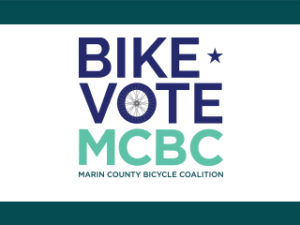
members make it happen!
We’re fighting for a more bike-friendly future in Marin. Are you with us? Join Marin County Bicycle Coalition today.
